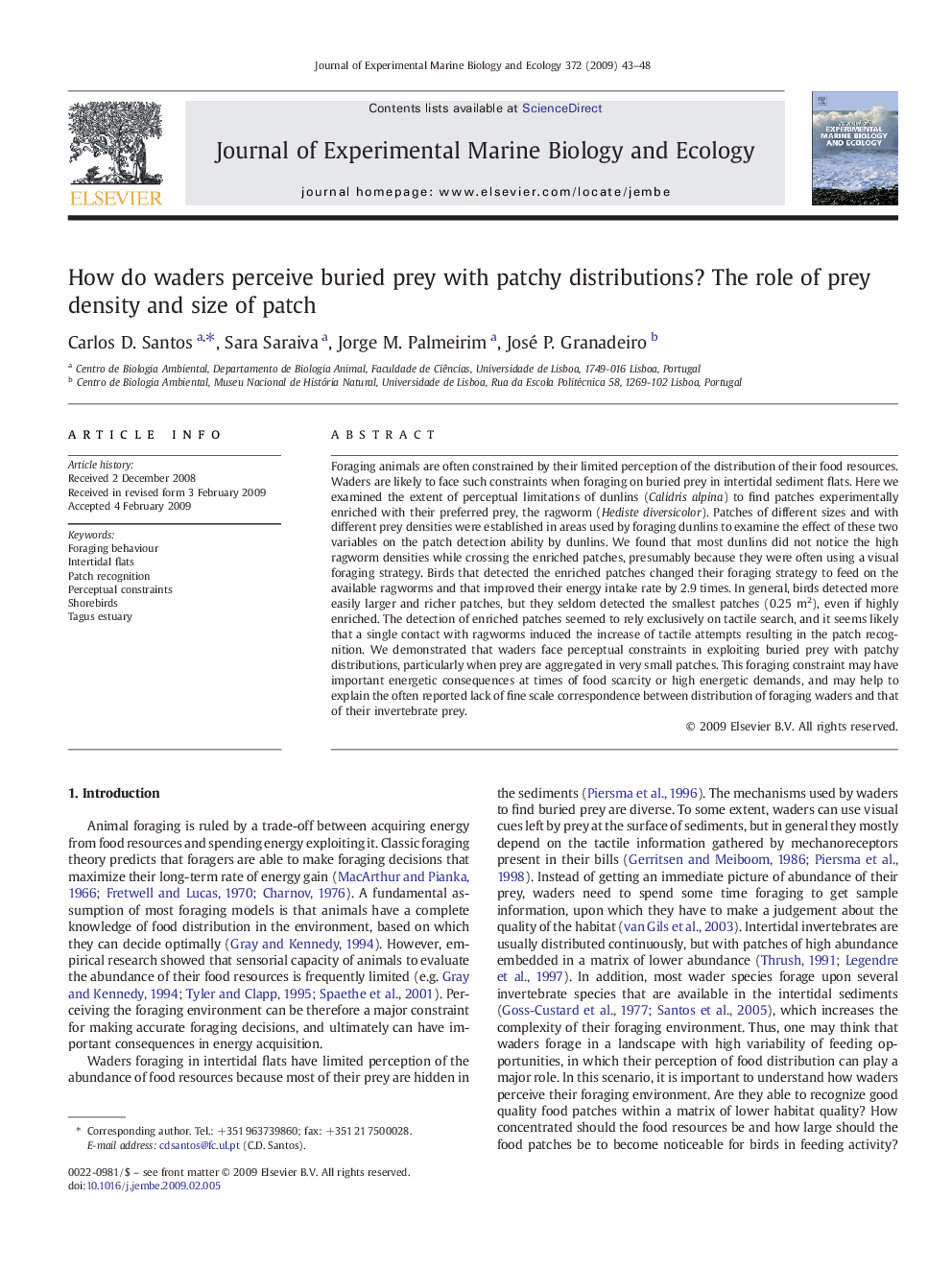| Article ID | Journal | Published Year | Pages | File Type |
|---|---|---|---|---|
| 4396994 | Journal of Experimental Marine Biology and Ecology | 2009 | 6 Pages |
Foraging animals are often constrained by their limited perception of the distribution of their food resources. Waders are likely to face such constraints when foraging on buried prey in intertidal sediment flats. Here we examined the extent of perceptual limitations of dunlins (Calidris alpina) to find patches experimentally enriched with their preferred prey, the ragworm (Hediste diversicolor). Patches of different sizes and with different prey densities were established in areas used by foraging dunlins to examine the effect of these two variables on the patch detection ability by dunlins. We found that most dunlins did not notice the high ragworm densities while crossing the enriched patches, presumably because they were often using a visual foraging strategy. Birds that detected the enriched patches changed their foraging strategy to feed on the available ragworms and that improved their energy intake rate by 2.9 times. In general, birds detected more easily larger and richer patches, but they seldom detected the smallest patches (0.25 m2), even if highly enriched. The detection of enriched patches seemed to rely exclusively on tactile search, and it seems likely that a single contact with ragworms induced the increase of tactile attempts resulting in the patch recognition. We demonstrated that waders face perceptual constraints in exploiting buried prey with patchy distributions, particularly when prey are aggregated in very small patches. This foraging constraint may have important energetic consequences at times of food scarcity or high energetic demands, and may help to explain the often reported lack of fine scale correspondence between distribution of foraging waders and that of their invertebrate prey.
